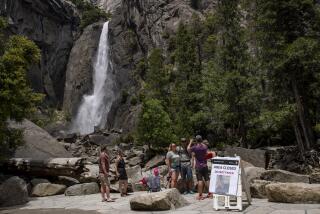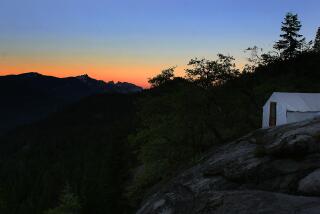After the Flood in Yosemite
Some parts of Yosemite National Park are open again after last month’s disastrous flooding in the valley. But the nature of visitor access to Yosemite, one of the most popular American vacation sites, promises to be forever changed by the widespread destruction wrought by the flood. The new reality: less spontaneity, more enjoyment.
Park officials announced last week that come summer, they will require visitors arriving in their own cars to make a reservation even for just a day in the park. The new day-use system could go into effect as early as May although details have yet to be worked out.
Coping with flood damage remains the No. 1 task of park rangers and administrators. Several roads into and out of the valley have been washed out. When the skies finally cleared, about 190 rental cabins, 170 motel rooms and 220 park employee quarters were under several feet of water. For many years park officials have sought to move these facilities farther from the Merced River, which would allow restoration of the meadows along the Merced and reduce overall congestion in the valley.
Given the lessons learned in this year’s calamity, it seems right to make these changes now. They would be part of a broader effort to get a handle on the congestion--the vehicular traffic, the exhaust and crowds--that has plagued the park for years and now seriously interferes with the enjoyment of Yosemite’s spectacular beauty.
Cars are the biggest problem. In the past several years, rangers have literally shut the gates when parking lots inside Yosemite filled to capacity or the snaking lines of traffic along the valley roads grew too long. During peak summer months, some families who drove from Los Angeles or other distant points to visit the park have been turned away or forced to wait hours before they could enter.
Day-use reservations are a more sensible approach, providing rangers--and visitors--predictability and control. Under this system, sightseers who expect to drive their own vehicle into the park will need an advance reservation. Backpackers and members of bus tours will probably be exempt from the reservation system.
Motel operators and merchants in communities just outside the park understandably fear that day-use reservations will cut into their business. They worry that since reservations will guarantee park entrance, fewer visitors will need rooms and meals unexpectedly in the adjacent towns. Yet the proposed system in fact offers opportunities for these so-called gateway communities. Operating shuttles to and from the park, for instance, and accommodating those the park can’t.
Money, not surprisingly, is the immediate concern. Damaged park facilities cannot be rebuilt nor the reservation system implemented without congressional funding. National Park Service officials in Yosemite estimate they need $178 million. With summer fast approaching, Congress should act. The payoff will multiply over the years. Highway 140, leading into the valley.
More to Read
Sign up for The Wild
We’ll help you find the best places to hike, bike and run, as well as the perfect silent spots for meditation and yoga.
You may occasionally receive promotional content from the Los Angeles Times.






